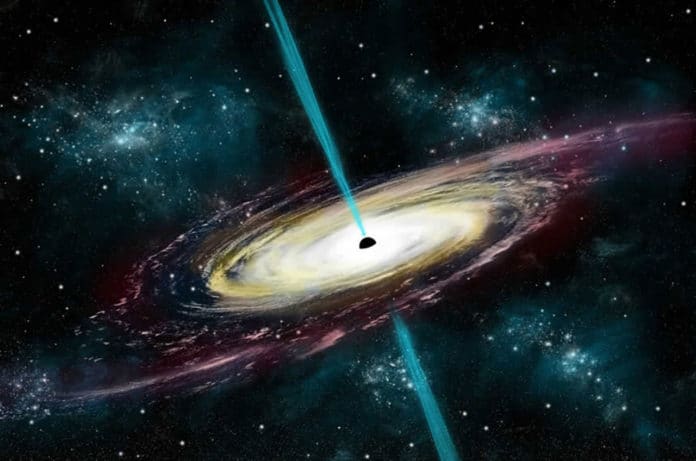Gamma-ray bursts (GRBs) are the most powerful explosions in the universe, and when a jet points towards Earth, the afterglow can be detected from the ground and space-borne telescopes.
The material doesn’t just sling from an exploding star, it quickens to ultra-high speeds along the narrow beam of a gamma-ray burst, leaving astronomy pondered the power source driving these exceptional explosions.
Scientists at the University of Bath, in collaboration with scientists from the UK, Italy, Slovenia, Russia, South Africa, and Spain, have come up with a possible explanation.
They examined data from the collapse of a massive star in a galaxy 4.5 billion light-years away. They were alerted to the star’s collapse after its gamma-ray flash (named GRB 190114C) was detected by NASA’s space-borne Neil Gehrels Swift Observatory.
An extremely low level of polarisation in the gamma-ray burst was identified in the moments straight after the star’s collapse. This indicates that the star’s magnetic field had been destroyed during the explosion.
Nuria Jordana-Mitjans, a lead author of the study, said, “From previous studies, we expected to detect polarisation as high as 30% during the first hundred seconds after the explosion. So we were surprised to measure just 7.7% less than a minute after the burst, followed by a sudden drop to 2% soon after.”
“This tells us that the magnetic fields collapsed catastrophically straight after the explosion, releasing their energy and powering the bright light detected across the electromagnetic spectrum.”
Professor Carole Mundell, head of Astrophysics at the University of Bath and co-author on the research, said: “Our innovative telescope systems are entirely autonomous, with no humans in the loop, so they slued very quickly and began taking observations of the GRB almost immediately after its discovery by the Swift satellite.”
Prof Mundell continued: “It is remarkable that from the comfort of our own homes, we were able to discover the importance of primordial magnetic fields in powering a cosmic explosion in a distant galaxy.”
Journal Reference:
- Lowly Polarized Light from a Highly Magnetized Jet of GRB 190114C. DOI:10.3847/1538-4357/ab7248
